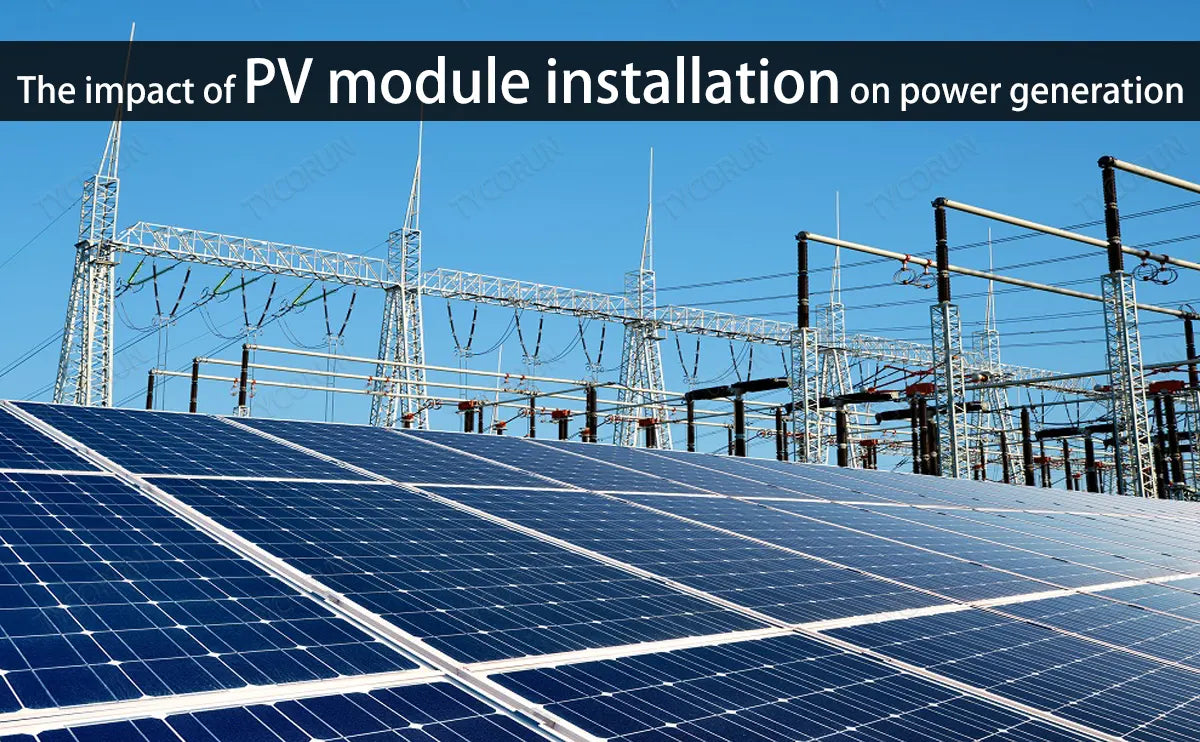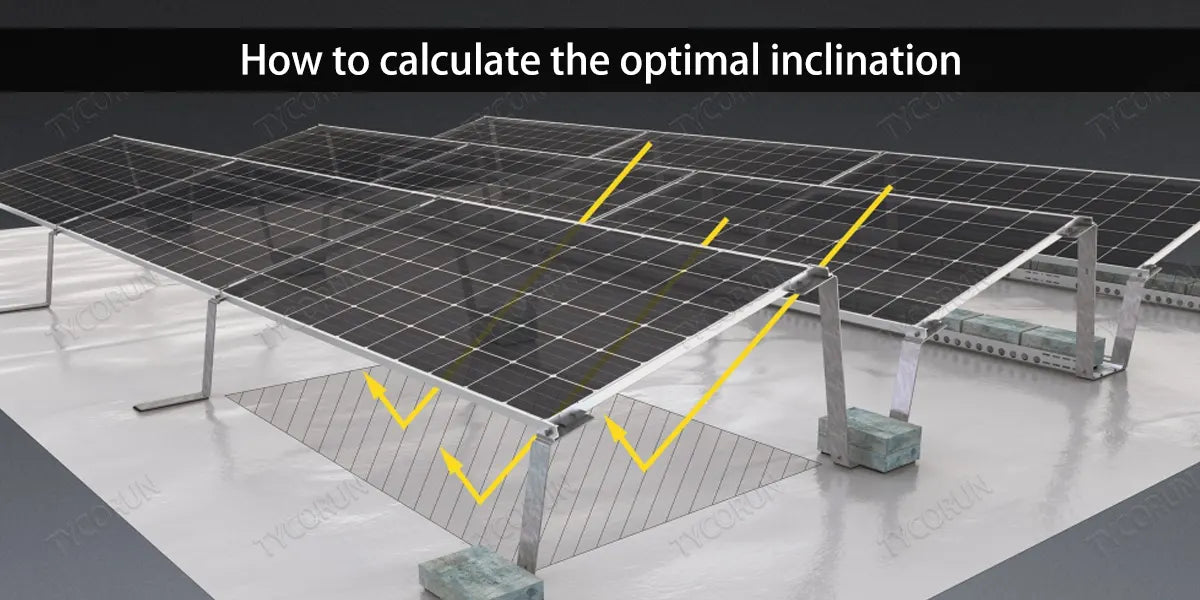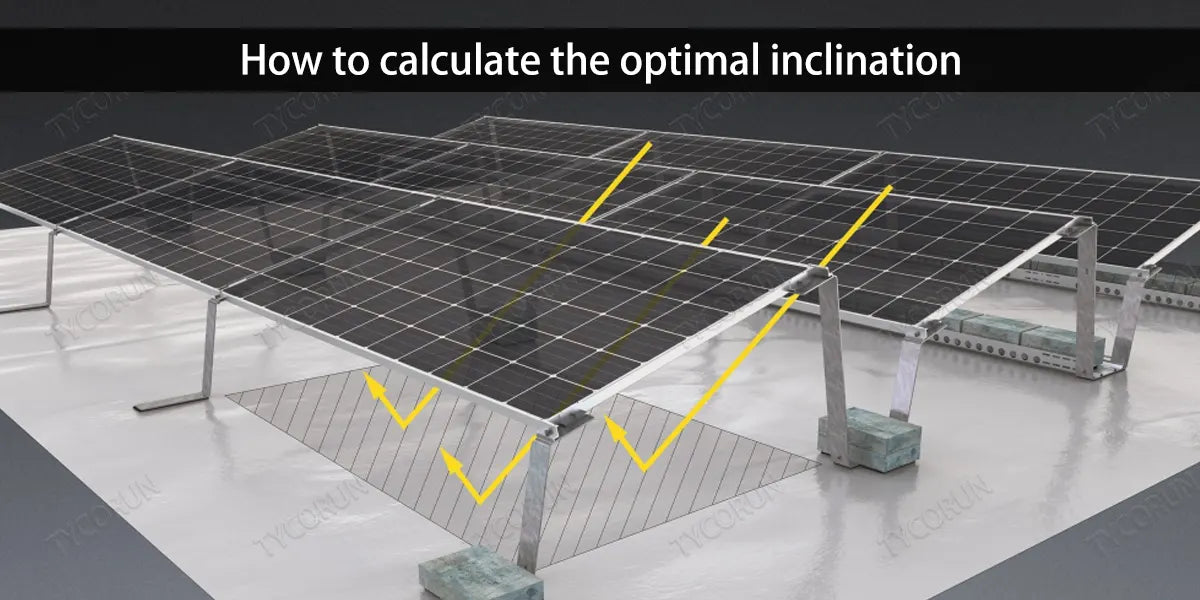
Main content:
The angle between the PV module surface and the horizontal plane of the ground surface is called the inclination angle. The Earth has been moving around the Sun, and the direct point of the Sun has been moving back and forth between the Tropic of Cancer and the Tropic of Cancer during an orbital cycle.
Therefore, the total amount of radiation received by the surface plane of the photovoltaic module is different at different inclination angles. When designing power stations, we generally refer to the historical data of cumulative radiation at different tilt angles throughout the year, and select the angle with the highest radiation as the optimal inclination angle.
1. What is the best inclination design
The optimum inclination angle is defined as the maximum annual total radiation, and if the total annual radiation received by the inclined plane of the stationary photovoltaic array under that inclination is the largest, the inclination angle is said to be the optimal inclination angle (not the highest annual power generation).
However, in some scenarios, the optimal inclination angle may also be the inclination corresponding to the highest annual power generation, the inclination corresponding to the highest yield, the inclination corresponding to the highest power generation in a given month, and various other constraints.

Just like solar panel angle, in this article, we mainly discuss the angle of inclination at which the annual total radiation is maximum.
2. Why you need the best inclination
The optimum inclination angle is designed primarily to receive more solar radiation. For a photovoltaic array bevel, the different angles of incidence of the sun on it result in different solar normal radiation received per unit area, and the larger the incidence angle (the angle between normal and normal perpendicular to the photovoltaic array), the less solar normal radiation is received (for the same radiation input).
Changing the angle of inclination of the photovoltaic array will change the angle of incidence of the sun, which will affect its radiation reception. Therefore, it is necessary to obtain the optimal inclination angle based on the radiation reception throughout the year through theoretical calculations.
In the process of designing the optimal inclination angle, it is also necessary to consider the geographical and natural environment of the project construction site. For example, consider the effect of the tilt angle on snow sliding. When the inclination angle changes, it affects the wind pressure resistance and snow pressure resistance of the high efficiency solar panels.

At the same time, it is also necessary to consider the influence of these factors on the selection of materials and the basis counterweight of photovoltaic brackets, as well as the change in the distance between the front and rear rows caused by too high an angle, which increases the cost of land use.
3. How to calculate the optimal inclination
Calculating optimal inclination requires local latitude and longitude to determine the Sun's altitude and azimuth angles at each moment, and multi-year mean annual radiation data to determine local solar radiation characteristics.
According to the radiation data and the calculation of longitude and latitude, the total annual radiation reception of photovoltaic arrays at different inclination angles is accumulated, and the inclination angle with the largest annual total radiation is selected as the optimal inclination angle.

It is advisable to use a single variable to compare the effects of different inclination angles on power generation. However, in general, the inclination angle of the same power station module is the same angle and orientation, and there are many influencing factors for comparing power stations in different regions.
4. Main factors for the power generation
- Latitude and season
Depending on latitude and seasonal variations in location, inclination and orientation are determined so that PV modules can receive maximum solar radiation. In general, in the Northern Hemisphere, the inclination can be set to the latitude angle minus 10 to 15 degrees, and the orientation can be set to the south due.
- Sun altitude angle
The solar elevation angle refers to the height of the sun in the sky, which changes with time and seasons. By studying the variation of the solar elevation angle, the inclination angle and orientation are selected, so that the photovoltaic module can receive the maximum solar radiation at different time periods.
- Shadow occlusion
Shadow occlusion can reduce the power generation efficiency of PV modules. When choosing an inclination and orientation, consider the occlusion of shadows caused by buildings, trees, or other objects. Avoid or minimize shadow occlusion to improve the power generation effect of photovoltaic power plants.
- Temperature effects
High temperatures can reduce the efficiency of PV modules. Proper tilt and orientation help the module dissipate heat and reduce the impact of temperature effects on power generation. Temperature also will have an effect on power inverter 3000w.

- Ground utilization
When choosing the inclination angle and orientation, consider the ground utilization of the photovoltaic power station. Depending on the available land or building space, determine the appropriate inclination and orientation to maximize the benefits of power generation. Optimize the inclination angle and orientation of the PV module to improve the power generation efficiency of the PV system and 2000w inverter.
5. How to increase the power generation of photovoltaic power plants
- Seasonal adjustments
Adjust the inclination of PV modules according to seasonal changes in location. In winter, the inclination angle should be appropriately increased to increase the contact area between photovoltaic panels and direct sunlight to improve power generation efficiency.
In summer, the inclination angle is reduced to reduce the overheating of photovoltaic panels that can be caused by direct sunlight and high summer temperatures.
- Latitude adjustment
Depending on the latitude of the location, the optimum inclination angle is determined. Generally speaking, the latitude angle minus about 15 degrees is a reasonable inclination setting that allows the PV module to receive the maximum solar radiation energy.
- Orientation optimization
Hemisphere, PV modules are oriented south to maximize solar radiation. The south-facing orientation ensures that PV modules receive maximum sunlight most of the time. In some situations where it is necessary to balance power generation in the morning and afternoon, PV modules are oriented in the east and west directions, and power generation is increased by the setting sun in the morning and evening.

- Tracking system
Use a tracking system to automatically adjust the orientation of PV modules with the movement of the sun, maximizing the reception of solar radiation. Tracking systems are usually divided into two types: single-axis tracking and dual-axis tracking, which can more accurately track the movement of the sun, but the cost is higher.
- Shadow analysis and optimization
Avoid shadows: Avoid PV modules being shaded by surrounding buildings, trees and other objects, so PV modules can receive full sunlight throughout the day. Regularly trim trees: Regularly trim surrounding trees to reduce their shading effect on PV modules. Shadow analysis and optimization techniques are a very important part of the design and operation of photovoltaic power plants.
6. Conclusion
The optimum inclination angle is related to the local geographic latitude. Taking the equator as the reference point, the number of optimal tilt angles gradually increases as the geophysical latitude gradually increases to poles of the earth.
When the tilt angle increases from horizontal to optimal, the amount of radiation received on the surface increases correspondingly, and the maximum amount of radiation is received when the optimal tilt angle is reached.
As the inclination angle continues to increase, the amount of radiation received by the surface begins to decrease again, and the corresponding power generation gradually decreases.
Related articles: top 5 solar panel brackets companies, off grid solar batteries, top 10 solar inverters
















